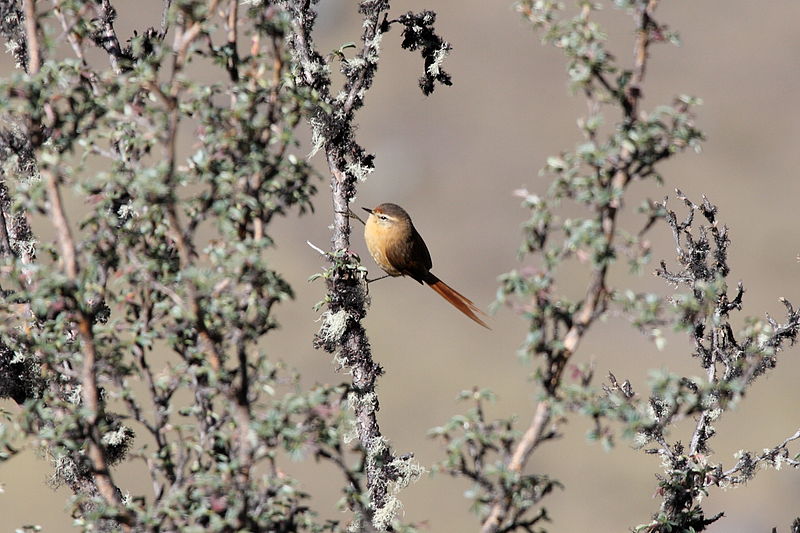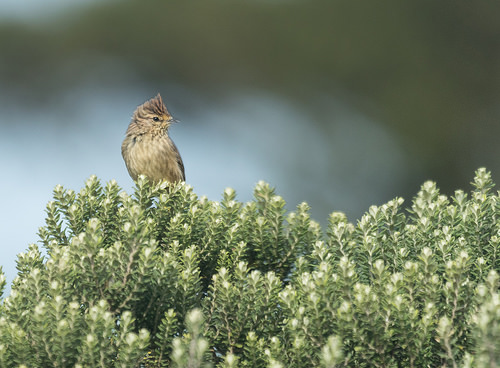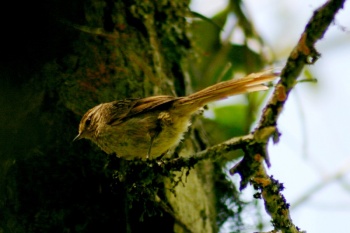
Leptasthenura striolata
SUBFAMILY
Synallaxeinae
TAXONOMY
Leptasthenura striolata Pelzeln, 1856.
OTHER COMMON NAMES
French: Synallaxe striolй; German: Strichelschlьpfer; Spanish:
Coludito Estriado.
PHYSICAL CHARACTERISTICS
Body length is about 6.5 in (16–16.5 cm). Bill is short, straight,
and sharply pointed. The body is small and slender, and the
tail is long and tipped with two sharp spines emerging from
the tips of the central pair of tail-feathers. The sexes are similar.
The back is colored brown with buffy streaks, the tail is
brown with rufous outer feathers, the wings are uniformly
brown, the throat and belly are reddish brown with brown
speckles, the crown of the head is black with rufous streaks,
and there is a buffy-white stripe over the eye.
DISTRIBUTION
A locally distributed species of southeastern Brazil.
HABITAT
Inhabits a variety of forested and shrubby habitats, and wellvegetated
gardens. Mostly occurs at 1,650–3,600 ft (500–
1,100 m).
BEHAVIOR
Non-migratory. Occurs as pairs during the breeding season, or
in small groups. Sometimes joins mixed-species foraging flocks.
The song is a high-pitched, descending series of notes and trills.
FEEDING ECOLOGY AND DIET
Forages energetically for insects and other small invertebrates
within the shrub and tree canopy, often hanging upside-down
while inspecting foliage, twigs, and flowers for prey.
REPRODUCTIVE BIOLOGY
Constructs a nest in a cavity in a tree, rock pile, wall, or
earthen bank, or in an abandoned oven-nest of another species
of ovenbird. Both the male and female incubate the eggs and
rear the nestlings.
CONSERVATION STATUS
Not threatened. An endemic species, abundant within its local
HABITAT
.
SIGNIFICANCE TO HUMANS
None known.
Other popular Animals
Photo Gallery of - Striolated tit-spinetail




 Animalia Life
Animalia Life